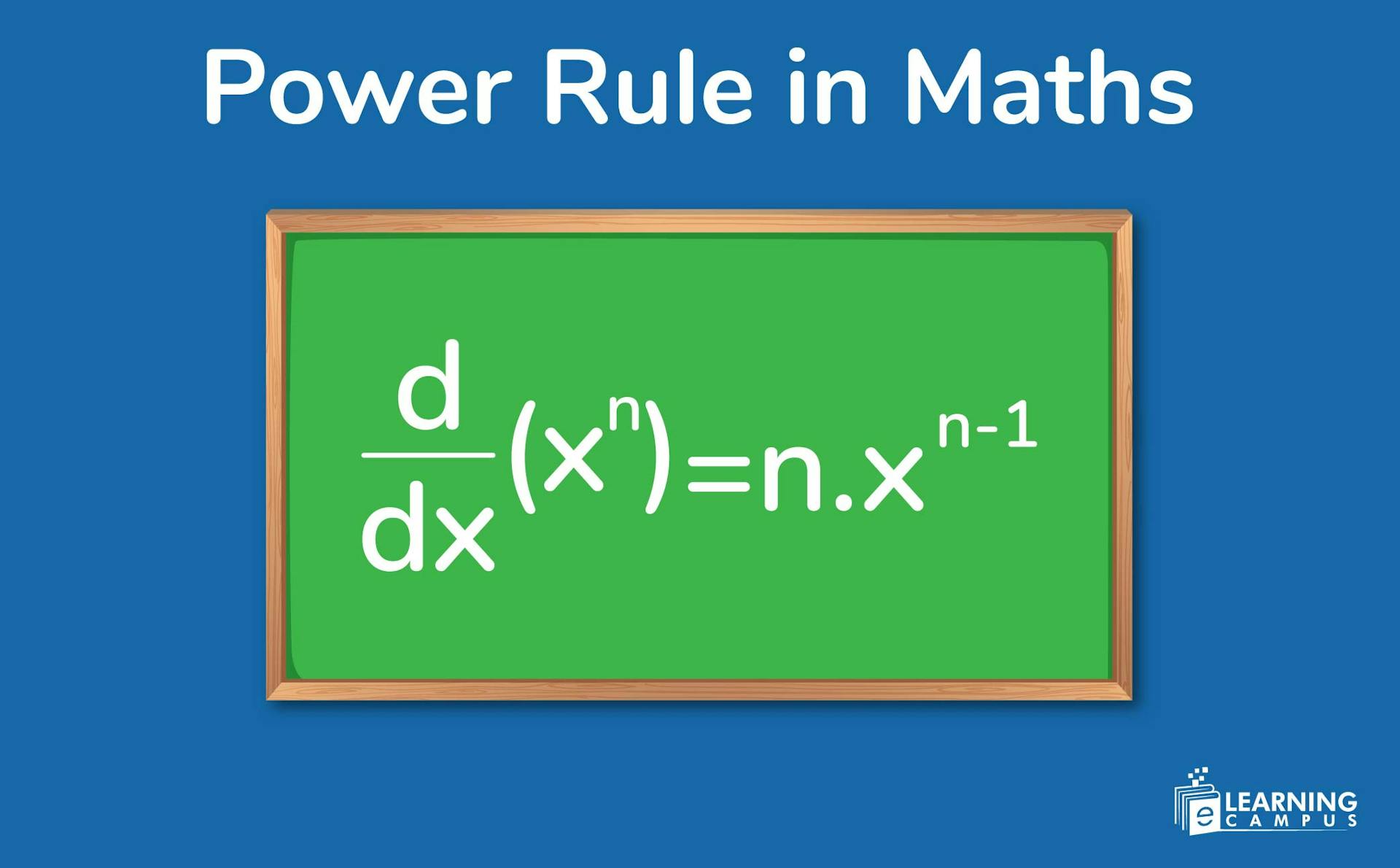Power Rule in Maths

Do you find it challenging to differentiate mathematical expressions that have powers? Students are usually troubled with these problems in examinations. The solution is to know the power rule.
The power rule in Mathematics is used to differentiate algebraic expressions that contain powers. In this blog, you will learn about the power rule, its formula, and how it is used in the differentiation of expressions.
What is the Power Rule of Derivatives
The power rule is a fundamental calculus rule to find the derivative of a function in exponential form, i.e., f(x)=xn. The rule states that to find the derivative, we bring the exponent down as a coefficient and then subtract one from the original exponent.
It makes differentiating polynomial expressions and functions with variable exponents easy. There is also a Power Rule in algebra for simplifying expressions with exponents.
Power Rule Formula
The power rule is used in calculus to find the derivative of a function where a variable is raised to a power (xn).
The general Power Rule formula is written as;
The power rule of differentiation states that the derivative of a variable raised to a power n is n times the variable raised to the power of n-1.
It is one of the most fundamental rules in calculus and applies to all real numbers 𝑛, including positive, negative, and fractional exponents.
Derivation of the Power Rule
We can prove the power rule formula using different methods. The common methods used for the derivation of the formula for the power rule are the binomial theorem and the principle of mathematical induction.
Proof of Power Rule Using Mathematical Induction
We can derive the power rule formula with the help of the Mathematical induction principle for a positive integer ‘n’. The formula
is derived by mathematical induction through a two-step process.
- Proving a base case for n=1
- Showing that if the rule holds for n=k, it must hold for n=k+1
Base Case (n = 1)
We first show that the power rule is true for n=1.
If n = 1, then
LHS = dx/dx = 1. Because the derivative of x is equal to 1.
Also, on the RHS, if we substitute n with 1, then
Therefore, we have LHS = RHS.
Since both results are equal, the base case is proven.
Inductive Step
We will assume that the power rule is true for some positive integer, k, and use this assumption to prove it is true for k+1.
Inductive hypothesis
Assume that for
the derivative is
We need to prove that the derivative of
- Rewrite f(x)=xk+1 as the product of two functions, i.e,
- Apply the product rule for differentiation, that is
- Let 𝑢=𝑥 and 𝑣=𝑥𝑘. Then 𝑢′=1 and 𝑣′=𝑘𝑥k-1 (from the inductive hypothesis).
- Substitute these into the product rule
- Simplify the expression
- Factor out 𝑥k
- This matches the power rule formula for 𝑛=𝑘+1
Hence, we proved the formula for the power rule from the mathematical induction principle.
How to Find the Derivatives Using the Power Rule
To find the derivative using the power rule, move the exponent to the front as a coefficient and subtract one from the original exponent.
Steps to Find the Derivative
- Identify the power: Find the exponent of the variable term.
- Move the exponent: Bring the exponent down in front of the term.
- Reduce the exponent: Subtract 1 from the original exponent.
- Apply to multiple terms: If the function has multiple terms (a polynomial), apply this process to each term individually.
- Handle constant coefficients: If a variable is multiplied by a constant, multiply that constant by the new coefficient you found in the previous steps.
- Handle constant terms: The derivative of any constant term is zero.
Example 1
Find the derivative of
We will use the power rule formula
Example 1
Find the derivative of the function
Move the exponent 3 to the front and multiply it by the existing coefficient 4.
h2> How to Find Derivatives of Polynomials by Power Rule
To find the derivative of a polynomial using the power rule, apply the formula to each term individually. Multiply the coefficient by the exponent, then decrease the exponent by one to get the derivative. The derivative of a constant term is always 0.
Example
Find the derivative of
We will differentiate each term separately using the Power Rule.
Now combine
Power Rule Integration
The power rule for integration is a simple way to find the integral (antiderivative) of a function like xn, where n is any real number except −1. The formula is
Here, C is the constant of integration, added because integrals represent a family of functions that differ by a constant.
Example
Integrate ∫x3 dx
- Here, n=3.
- Apply the formula:
Power Rule Exponents
The power rule for exponents states that to raise a power to another power, we need to multiply the exponents while keeping the base the same.
The power rule formula for exponents is
(xm)n = xmn
This rule also applies when a product or fraction is raised to a power, distributing the exponent to each factor in the expression.
Example
Power Rule Logarithms
The power rule of logarithms states that the logarithm of a number raised to a power is equal to that power multiplied by the logarithm of the number.
The power rule logarithm formula is given as;
Example
Conclusion
The Power Rule is a calculus formula that states the derivative of a function 𝑥n is 𝑛𝑥n-1. To find the derivative, you multiply the existing term by the exponent, then subtract one from the exponent to get the new exponent. This rule applies to positive, negative, and fractional exponents and is a fundamental tool for differentiating polynomials.
Get Mastery in Maths Online
Are you looking to learn math online with expert tutors? We are at your service. We have professional online math tutors with years of experience in helping students. You will get personalized instruction for your exam preparations.
